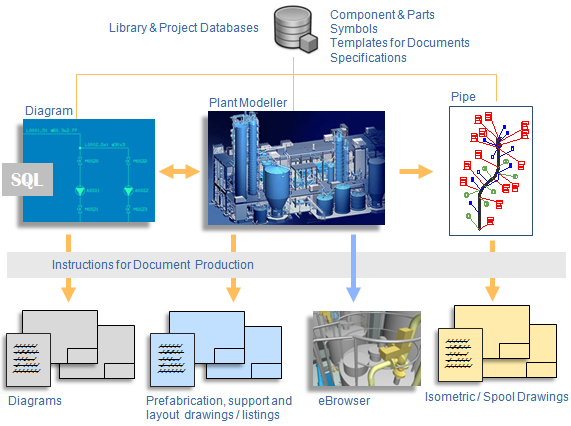Overview
The CADMATIC Plant/Outfitting software package contains the following main applications:
- In P&ID, the intended process is described schematically in a 2D format, using predefined symbols and metadata stored in a Microsoft SQL database.
- In Plant Modeller, the process is described in a 3D format to present a plant or ship in a realistic way, using pipes, fittings, equipment, structural components, and so on. From the 3D model, you can generate various documents such as prefabrication drawings, isometric drawings, support drawings, and general layouts.
- In Piping Isometrics & Spools (or Plant Modeller), you can generate isometric drawings and spool drawings, using isometric groups defined in Plant Modeller.
All applications store their data in CADMATIC Object Storage (COS) databases, which ensures consistent use of shared data throughout the design project.
All projects use two COS databases:
- The library database contains data that can be used across multiple projects: piping components, drawing symbols, drawing sheets, configuration objects, and so on.
- The project database contains data specific to a project: specifications, systems, ductlines, pipelines, and cable trays.
The project administrator sets up and manages the COS databases to provide a suitable working environment for the designers. This includes creating and selecting piping components and attributes for listings and drawings, defining drawing sheets and title block information, defining systems and lines, managing the distribution of project settings to satellite sites, and so on.
Sites that use CADMATIC form a COS network, where the root server manages the library and project databases. The root server also manages the replica server of each satellite site, performing the data transfer operations needed to replicate model objects and documents between the root and replica servers.
You can click in the picture below to read more about a specific aspect.
